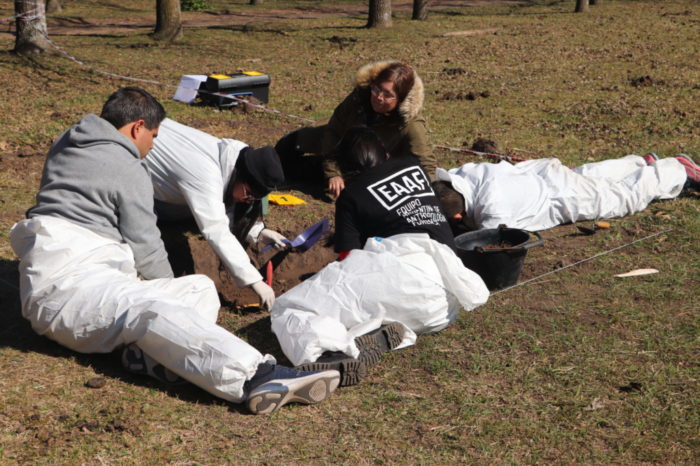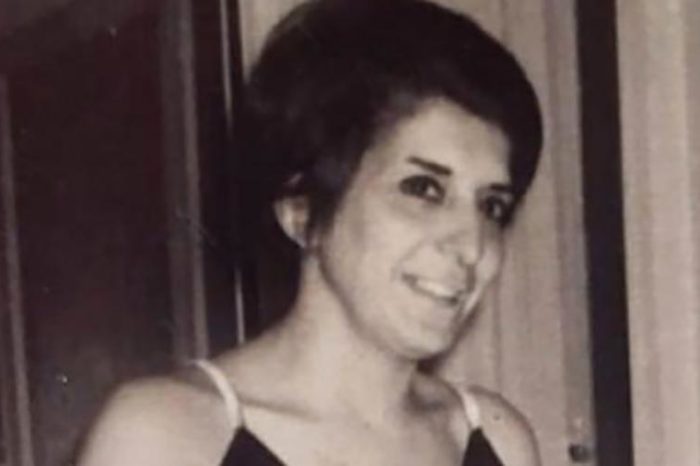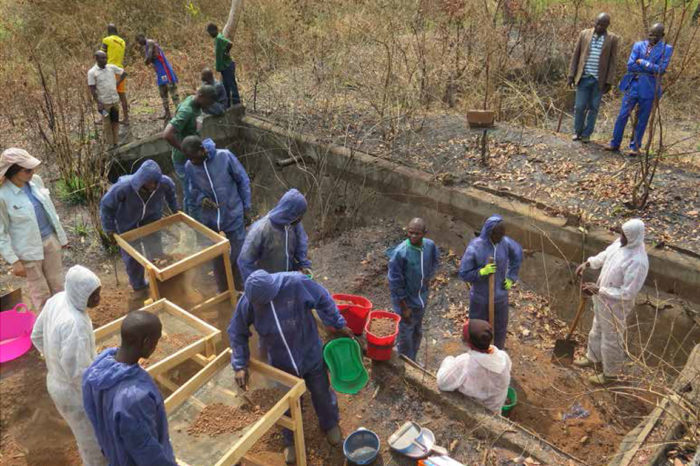“We need them to elucidate to us how Christian’s bone brought to the ravine”

While suffering the rigors of covid-19 locked up at home, lawyer Vidulfo Rosales was looking for the right way to tell the families of the 43 what he had just heard. It was early July. The Ayotzinapa prosecutor, Omar Gómez, had called him on the phone to give him the news: one of the bones sent to the Austrian laboratory had tested positive. It was from one of the students.
Rosales identified her concern clearly. The bone fragment analyzed, a piece of bone from the foot, was so small that it had been consumed in tests carried out in the laboratory. “The only thing that remained of the bone were the documents that the scientists had made explaining the analyzes,” he details. “Nothing could be delivered except the papers… Sure, how do you explain that to the family? How do you explain it to the rest?
Recovered from the virus, Rosales attended this Friday the monthly meeting that the relatives of the 43 have with the president of Mexico, Andrés Manuel López Obrador. It was a strange meeting. Expected date in the calendar each month, fathers and mothers arrived exhausted this time at the National Palace. Vidulfo Rosales and the rest of the lawyers had been talking with the families of the discovery for days. The lawyer says that they decided to record a video and share it with everyone to explain the details. “Emotionally it has hit them very hard, because this awakened in them the possibility that their children are not found alive,” he explains.
When the meeting with the president ended, the families of the 43 got on the bus and traveled back to the state of Guerrero. Used to talking to the press, this time they didn’t say a word. On that bus was Clemente Rodríguez, Christian’s father, owner of the bone identified in the Austrian laboratory. When he was disappeared in 2014 in Iguala, Christian Rodríguez was 19 years old. Don Clemente tells in a telephone interview that in the meeting with the president he had a moment alone with him. “I told him that they had found a remnant of my son, but that does not mean that this ends here, on the contrary, a path is opened and we have to go thoroughly,” he says.
“A person can live with one foot,” Clemente argues from his home in Tixtla, a few kilometers from the Ayotzinapa school, where Christian was studying. “I told the president, ‘you are talking about a remnant, which is very different from a body.’ Because many people ask me these days ‘when are they going to take the body to your house?’ And I tell them, ‘there is no body’. We want the body to assume that my son is not alive. As long as we do not see the body, our son is alive, no matter how much people do not think it.
For the first time in almost six years, the discussion about the Ayotzinapa case does not revolve around the murder of the students and their burning in a garbage dump. Neither the magnitude or temporality of the bonfires that it could host or the number of students that burned in them. The story now centers on a ravine almost a kilometer away, the ravine of the carnage. In November, the current researchers found dozens of pieces of bone there, including Christian’s. An unexpected finding that has become the starting point of the new narrative.
Analysis of the remains allowed the first identification of one of the 43 missing students in more than five years. A certainty that nevertheless fed all the uncertainties entrenched in this time. Says Clemente Rodríguez: “We want to know what really happened, how did that rest get to that ravine there, who took it there. And who were the intellectual actors. There is the Army, the municipal police of Iguala, the ministerial police, the Huitzuco police, the federal police ”. And even more: what about the rest of the students? Why didn’t the previous prosecutors look for more in that place?
Until now, the only identification made was of a bone that had belonged to another student, Alexander Mora. In that case, however, the families were suspicious. The discovery of Alexander’s bone occurred in 2014 under strange circumstances, without the presence of experts outside the old prosecution. Parents never trusted the investigators who were then leading the investigations. They were the ones who built the version of the garbage dump, the famous historical truth, disclosed at the end of that year: a criminal group supported by local police attacked the students in Iguala on the night of September 26, 2014. The attackers took 43 boys, some already dead, to the Cocula garbage dump, near Iguala. There they killed those who were still alive, gathered the bodies and set them on fire. They then dumped the remains into a nearby river. Alexander’s bone would have appeared in a bag in the river.
Since 2015, independent researchers have questioned the version of the garbage dump and the remains found in the river. First it was the GIEI, the group of experts sponsored by the Inter-American Commission on Human Rights, which came to Mexico to study the case. That year, the GIEI denounced that the version of the garbage dump had been built mainly around the testimony of detainees who could have been tortured. Years later, the UN would end up agreeing with them.
The GIEI also provided an expert report by an expert in fire dynamics, José Torero, who ruled out that the garbage dump had housed a fire of the power and dimensions necessary to undo 43 bodies. The investigators, then led by Tomás Zerón, backed down. They said that they had never talked about the 43, but about a large group of students.
Chilean lawyer Francisco Cox, a member of the GIEI, traveled to Mexico a few days ago to accompany the families after the identification of Christian’s bone. “The ravine was a place that researchers knew in 2014. We always said that all lines of investigation had to be exhausted and not just abandoned, something that we pointed out from the first report. And what was wanted with the historical truth was to close the case, ”he criticizes.
After the GIEI, another team of independent researchers, the Argentine Forensic Anthropology Team, EAAF, published a report on the search work they had done over the course of more than a year and a half in the dump, with the permission of the researchers from the old prosecution. The EAAF proposed a thesis complementary to that of the GIEI and concluded that in the garbage dump there were no remains of a fire like the one proposed by Tomás Zerón’s team.
Mercedes Doretti, a member of the EAAF, says that “there were no unburned remains in the dump and that caught our attention, because we couldn’t get DNA from anywhere. (…) What I am saying is that in the garbage dump there are no samples like those of the ravine, which could have been analyzed. That is why it is a mistake to think that since the ravine is 800 meters from the garbage dump, it can be part of the same. No, the ravine is a piece of a new puzzle ”.
The identification of Christian’s foot bone now forces investigators to trace its journey from the night of the events, to its discovery in the canyon of the carnage in November. Although you may never fully know what happened. Cox cautions: “You have to keep in mind that a long time has passed and we may never have a narrative as clear and orderly as when you make it. Do not have excessive expectations. You have to get to where the evidence takes you ”.















